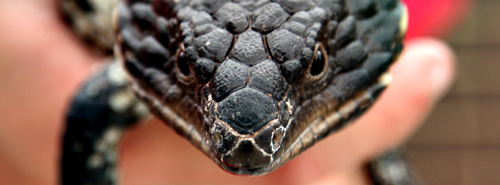 Spike is cared for by a young man we’ll know as Daniel and they live at the Queenstown residential care unit. Though Spike is now settled and comfortable in his temperature-controlled aquarium, it was not always so.
Spike is cared for by a young man we’ll know as Daniel and they live at the Queenstown residential care unit. Though Spike is now settled and comfortable in his temperature-controlled aquarium, it was not always so.
Spike moved in with Daniel at his previous placement only after Daniel wrote a letter to the manager, successfully requesting a variation to the no-pet policy.
When Daniel moved to Queenstown it was without Spike, who had become lost. Several months later, Spike was found comfortably settled under a lounge suite and he and Daniel were reunited, much to the joy of Daniel — and the relief of staff at his previous placement.
‘The staff here value the skills and personal growth that pet ownership can bring for some of our residents and the way the presence of pets contributes to a more home-like environment,’ explains Sue Wilson, Supervisor at Queenstown.
‘Daniel is very passionate and knowledgeable about his pets and a keen member of a herpetology club where he entered a raffle – and won a snake!
‘We tried keeping the snake but it escaped and, understandably, some staff were quite concerned so we had a problem.’
Fortunately Mark, one of the Queenstown staff, fostered the snake and replaced him with another stumpy which Daniel named Roadkill.
‘Daniel and the snake still have access visits,’ explains Sue.
Spike has pioneered the way for a small menagerie of animals that now call Queenstown home.
‘After 12 months we have, as well as Spike and Roadkill, two turtles, two budgies and some goldfish,’ says Sue.
As a footnote, is seems that telling the gender of a lizard is not easy. The experts at the herpetology club have determined that Spike should have been named Spikette so the delighted Daniel now has what he hopes will be a breeding pair.
Watch this space…
Follow us on Twitter.

